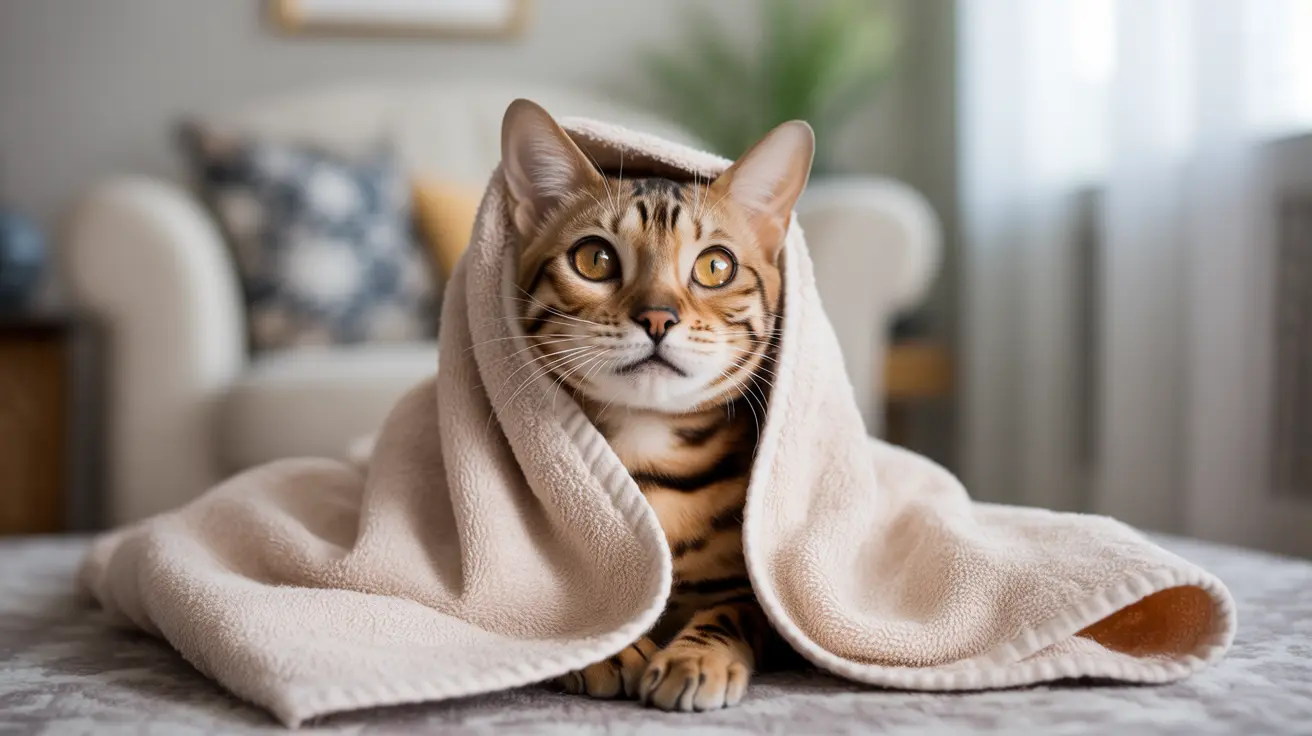Many cat owners and even some veterinary professionals have long believed that scruffing - grabbing the loose skin at the back of a cat's neck - is a natural and harmless way to handle cats. However, modern veterinary science has revealed important truths about this practice that every cat owner needs to understand.
In this comprehensive guide, we'll explore whether scruffing hurts cats, examine the scientific evidence behind this controversial handling technique, and provide safer alternatives for managing your feline friend.
Understanding Cat Scruffing: What It Is and Why People Do It
Scruffing involves grasping the loose skin at the nape of a cat's neck, a technique that mimics how mother cats carry their kittens. While mother cats naturally scruff their young, this biological mechanism works very differently for adult cats than it does for kittens.
The practice gained popularity because people observed mother cats carrying kittens this way, assuming it would have the same calming effect on adult cats. However, this assumption overlooks crucial developmental differences between kittens and mature cats.
The Physical Impact of Scruffing on Adult Cats
Research shows that scruffing can indeed hurt adult cats, both physically and emotionally. Unlike kittens, adult cats have fully developed bodies that aren't designed to be carried or restrained by the scruff. The extra weight and muscle mass of an adult cat make this position potentially painful and stressful.
Physical effects of scruffing may include:
- Neck strain and muscle tension
- Skin irritation or damage
- Breathing difficulty
- Increased blood pressure due to stress
Emotional and Behavioral Consequences
Beyond physical discomfort, scruffing can have significant psychological impacts on cats. When scruffed, adult cats often experience:
- Intense fear and anxiety
- Loss of trust in their handlers
- Increased aggressive behavior
- Development of long-term stress responses
- Avoidance of human interaction
When Is Scruffing Appropriate?
While scruffing is generally discouraged, there are rare emergency situations where it might be necessary as a last resort. These include:
- Preventing immediate injury to the cat or handler
- Emergency medical situations
- When other restraint methods have failed and treatment is crucial
However, even in these cases, the cat's body weight should always be supported, and the scruff should never be used to lift the cat.
Safe Alternatives to Scruffing
Veterinary experts recommend several gentler handling techniques that are both effective and less stressful for cats:
- Towel wrapping or "purrito" method
- Using cat carriers for transport
- Gentle support holds under the chest and hindquarters
- Positive reinforcement training
- Professional grooming tools designed for safe restraint
How to Build Trust Without Scruffing
Creating positive handling experiences is crucial for long-term cat care. Focus on:
- Regular gentle petting and grooming sessions
- Reward-based training
- Respecting your cat's boundaries
- Creating a calm environment for necessary handling
- Working with certified feline behaviorists when needed
Frequently Asked Questions
Does scruffing hurt adult cats, and why is it considered painful or stressful?
Yes, scruffing can hurt adult cats because their bodies are heavier and more developed than kittens'. The weight of an adult cat's body can cause strain on the neck muscles and skin when scruffed, leading to physical discomfort and significant stress.
Is scruffing a safe and humane way to handle or discipline my cat?
No, scruffing is not considered safe or humane for routine handling or discipline. Modern veterinary science shows it can cause physical pain and psychological distress, potentially damaging the bond between cat and owner.
When, if ever, is scruffing appropriate to use with cats, and how should it be done safely?
Scruffing should only be used in genuine emergencies where no other options exist. If necessary, always support the cat's body weight and release the hold as soon as possible. Consult with veterinary professionals for proper technique.
What are the physical and emotional risks to cats from being scruffed regularly?
Regular scruffing can lead to physical injuries, chronic stress, fear aggression, and damaged trust between cat and handler. It may also cause cats to develop anxiety around handling and veterinary visits.
What are safe and effective alternatives to scruffing for restraining or handling a cat?
Safe alternatives include towel wrapping, positive reinforcement training, proper support holds, and using cat carriers. These methods maintain the cat's dignity while ensuring safety for both cat and handler.
Conclusion
While scruffing was once considered standard practice, modern veterinary science clearly shows it can hurt cats both physically and emotionally. By understanding the risks and implementing gentler handling techniques, we can ensure our feline companions receive the respectful, stress-free care they deserve.
Remember, building trust through positive interactions will always yield better results than forceful restraint methods. If you're struggling with cat handling, consult a veterinarian or certified feline behaviorist for professional guidance.






